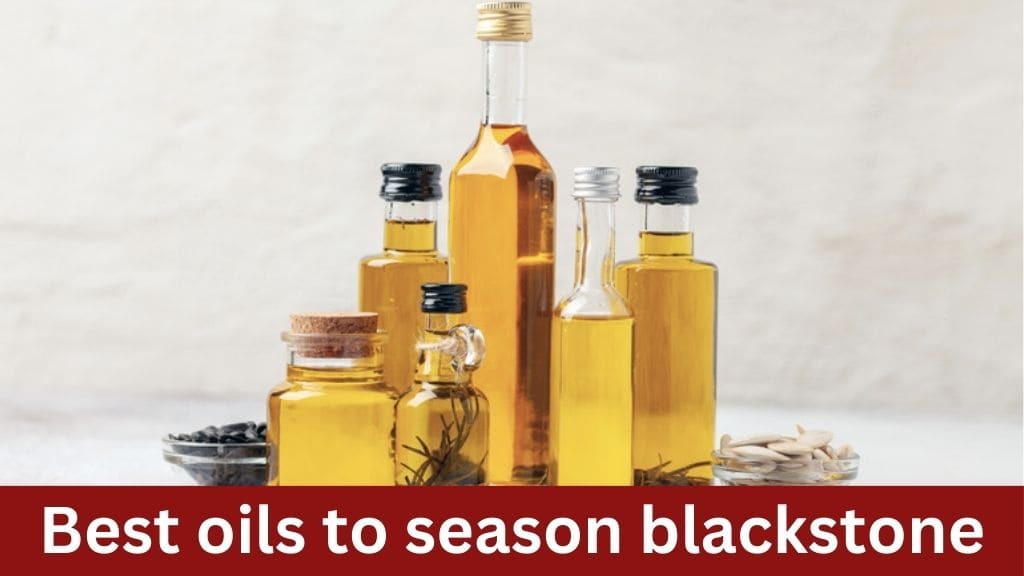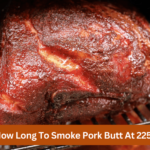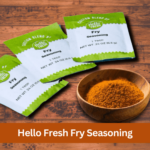Welcome to the ultimate guide on choosing the best oils for seasoning your Blackstone griddle! Whether you’re a seasoned grilling enthusiast or just embarking on your culinary journey, understanding the importance of proper seasoning is key to achieving delicious results every time you cook on your griddle. In this comprehensive blog post, we’ll explore the significance of seasoning, delve into the characteristics of various oils, and provide you with expert tips on how to achieve the perfect seasoning for your Blackstone griddle. Let’s dive in!
Why Seasoning Your Blackstone Griddle Matters
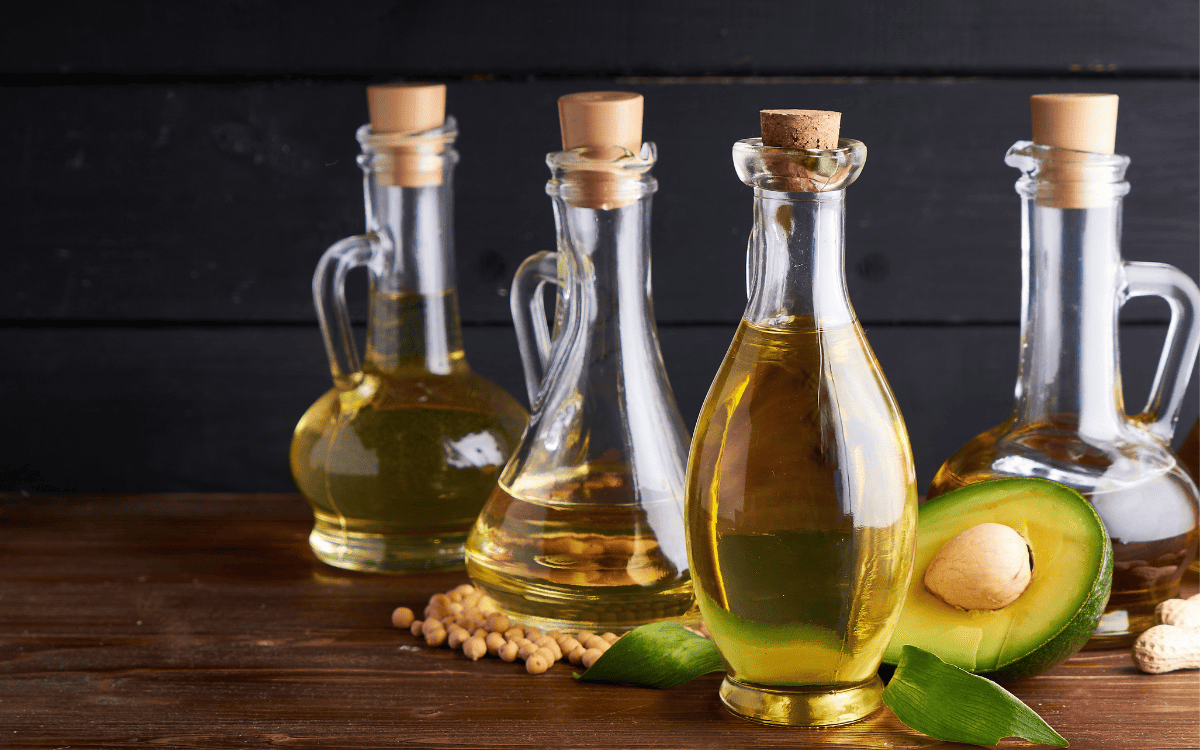
Seasoning your Blackstone griddle is not just a routine maintenance task; it’s a crucial step in ensuring optimal cooking performance and longevity of your griddle. Here’s why seasoning matters:
Protection Against Rust and Corrosion
By properly seasoning your Blackstone griddle with the right oil, you create a protective barrier between the metal surface and these harmful elements. This barrier helps to prevent moisture and acidic substances from coming into direct contact with the metal, thereby reducing the likelihood of rust formation and corrosion.
Furthermore, the seasoned layer acts as a shield, inhibiting the penetration of water molecules and acidic compounds into the porous surface of the griddle. This not only helps to maintain the aesthetic appearance of the griddle but also prolongs its lifespan and ensures optimal performance over time.
Enhanced Non-Stick Properties
The non-stick properties of a seasoned griddle stem from the polymerization process that occurs when oil is heated on the metal surface. During seasoning, the oil bonds with the metal, forming a thin layer that fills in microscopic pores and irregularities on the surface. This smooth, uniform coating creates a barrier between the food and the metal, preventing it from sticking during the cooking process.
As a result, food effortlessly slides across the surface of the griddle, allowing for easy flipping, turning, and removal without leaving behind any residue or sticking. This is particularly beneficial when cooking delicate items such as eggs, pancakes, or fish fillets, where maintaining their shape and integrity is crucial.
Furthermore, the non-stick properties of a seasoned griddle promote even cooking and browning, as the food comes into direct contact with the hot surface without sticking or burning. This ensures that your dishes are cooked evenly and perfectly every time, with minimal effort and cleanup required.
Improved Flavor and Cooking Performance
Flavor Enhancement:
- Natural Barrier: The seasoned layer acts as a natural barrier between the metal surface of the griddle and your ingredients. This prevents the metallic taste that can sometimes occur when food comes into direct contact with untreated metal surfaces.
- Enhanced Maillard Reaction: The Maillard reaction, which occurs when proteins and sugars in food are subjected to heat, is responsible for the delicious browning and flavor development that we associate with grilled and seared foods. A well-seasoned griddle promotes a more consistent and intense Maillard reaction, resulting in richer, more complex flavors in your cooked dishes.
- Infusion of Seasoning Oils: During the seasoning process, the oil used forms a bond with the metal surface of the griddle. As you cook on the seasoned griddle, small amounts of this oil are released into the food, imparting subtle, savory flavors that enhance the overall taste of your dishes.
Cooking Performance:
- Even Heat Distribution: A properly seasoned griddle provides excellent heat distribution across its surface, ensuring that food cooks evenly and consistently. This eliminates hot spots and reduces the likelihood of undercooked or overcooked areas in your dishes.
- Improved Control: The non-stick properties of a seasoned griddle give you greater control over the cooking process. You can easily flip, turn, and move food around the surface without it sticking or tearing, allowing for precise cooking and perfect results every time.
- Versatility: A well-seasoned griddle can handle a wide range of cooking techniques, from searing and grilling to sautéing and frying. Whether you’re cooking meats, vegetables, eggs, or pancakes, a seasoned griddle provides the perfect surface for achieving professional-quality results.
Characteristics of the Best Oils for Seasoning

When it comes to choosing the right oil for seasoning your Blackstone griddle, there are several key characteristics to consider:
High Smoke Point
Importance of High Smoke Point:
- Durability: Oils with high smoke points are more resilient to high temperatures, making them ideal for seasoning griddles that will be subjected to intense heat during cooking. These oils can withstand the prolonged exposure to heat without breaking down or burning, ensuring a durable and long-lasting seasoning layer on your griddle.
- Prevention of Rancidity: When oils reach their smoke point, they can undergo chemical changes that lead to the formation of harmful compounds and off-flavors. Oils with high smoke points are less prone to rancidity, allowing them to maintain their freshness and integrity even when used for high-heat cooking methods like griddling.
- Versatility: Oils with high smoke points are versatile and can be used for a wide range of cooking applications, from frying and searing to grilling and roasting. They provide greater flexibility in the kitchen and allow you to experiment with different cooking techniques without worrying about the oil breaking down or smoking excessively.
Examples of Oils with High Smoke Points:
- Canola Oil: Canola oil is known for its relatively high smoke point, making it a popular choice for high-heat cooking methods such as griddling. It has a neutral flavor and light texture, making it suitable for seasoning griddles without overpowering the natural flavors of the food.
- Vegetable Oil: Vegetable oil, derived from various plant sources, also has a high smoke point, making it suitable for seasoning griddles. It has a mild flavor and is widely available, making it a convenient option for home cooks.
- Flaxseed Oil: Flaxseed oil is another oil with a high smoke point that is often used for seasoning griddles. It contains high levels of unsaturated fats, which contribute to the formation of a durable seasoning layer on the griddle surface.
Neutral Flavor
Importance of Neutral Flavor:
- Versatility: Neutral-flavored oils are versatile and can be used with a wide range of ingredients and cuisines without altering the taste of the final dish. They serve as a blank canvas, allowing you to experiment with different flavors and seasonings without any unwanted interference from the oil.
- Compatibility: Neutral-flavored oils pair well with a variety of cooking styles and techniques, making them suitable for seasoning griddles that will be used for a diverse range of dishes. Whether you’re cooking savory or sweet, breakfast or dinner, a neutral-flavored oil won’t clash with the flavors of your ingredients.
- Enhanced Natural Flavors: By using a neutral-flavored oil for seasoning, you can enhance the natural flavors of your food and achieve a more authentic and enjoyable eating experience. The subtle nuances and aromas of the ingredients are allowed to shine through, resulting in a more satisfying and memorable meal.
Examples of Oils with Neutral Flavor:
- Canola Oil: Canola oil is prized for its neutral flavor profile, making it a popular choice for seasoning griddles. It has a light, mild taste that won’t overpower the natural flavors of your dishes, allowing them to be the star of the show.
- Vegetable Oil: Vegetable oil, derived from a variety of plant sources, also has a neutral flavor that makes it suitable for seasoning griddles. It has a clean, light taste that complements a wide range of ingredients and cooking styles.
- Grapeseed Oil: Grapeseed oil is another option with a neutral flavor profile, making it an excellent choice for seasoning griddles. It has a subtle, delicate taste that won’t detract from the flavors of your food, making it ideal for use in a variety of dishes.
Composition High in Unsaturated Fats
Importance of Composition High in Unsaturated Fats:
- Formation of Polymerized Layer: Oils high in unsaturated fats, such as flaxseed oil, have a molecular structure that allows them to bond more effectively with the metal surface of the griddle during seasoning. As the oil is heated, the unsaturated fats undergo polymerization, forming a sturdy, resilient layer that adheres tightly to the metal and provides excellent protection against wear and tear.
- Durable Seasoning: The polymerized layer created by oils high in unsaturated fats is more resistant to degradation and can withstand high temperatures and frequent use without breaking down or flaking off. This results in a more durable and long-lasting seasoning layer on your griddle, ensuring optimal performance and longevity.
- Enhanced Non-Stick Properties: The polymerized layer formed by oils high in unsaturated fats contributes to the enhanced non-stick properties of the griddle surface. This allows food to slide easily across the surface without sticking, making cooking and cleanup a breeze.
Examples of Oils High in Unsaturated Fats:
- Flaxseed Oil: Flaxseed oil is renowned for its high content of omega-3 fatty acids, which are unsaturated fats that contribute to its polymerization properties. When used for seasoning, flaxseed oil forms a durable and resilient seasoning layer on the griddle surface, enhancing its performance and longevity.
- Soybean Oil: Soybean oil is another oil that is high in unsaturated fats and suitable for seasoning griddles. It contains a mix of polyunsaturated and monounsaturated fats, which contribute to its ability to polymerize and form a durable seasoning layer.
- Sunflower Oil: Sunflower oil is rich in monounsaturated fats, which make it an excellent choice for seasoning griddles. It forms a strong, protective layer on the surface of the griddle, enhancing its non-stick properties and ensuring optimal cooking performance.
How to Season Your Blackstone Griddle
Now that you understand the importance of seasoning and the characteristics of the best oils, let’s walk through the step-by-step process of seasoning your Blackstone griddle:
Step 1: Clean Your Griddle
Steps for Cleaning Your Griddle:
- Scrape Off Debris: Use a griddle scraper or spatula to remove any food debris or residues from the surface of the griddle. Ensure that you scrape off any stuck-on bits to achieve a smooth and clean surface.
- Wash with Mild Soap and Water: Use a mild dish soap and water solution to wash the griddle surface thoroughly. Use a non-abrasive sponge or cloth to scrub away any remaining residues or stains.
- Rinse Thoroughly: Rinse the griddle surface with clean water to remove any soap residue or lingering debris. Ensure that you rinse the entire surface, including the sides and corners, to achieve a thorough clean.
- Dry Completely: Once the griddle is clean and rinsed, use a clean towel or paper towels to dry it completely. Ensure that the surface is completely dry before proceeding with the seasoning process to prevent water from interfering with the bonding of the seasoning oil.
Step 2: Preheat Your Griddle
Steps for Preheating Your Griddle:
- Turn on the Heat: Turn on your griddle and set the heat to high. Allow the griddle to heat up gradually, ensuring that the entire surface reaches the desired temperature evenly.
- Monitor the Temperature: Use a thermometer to monitor the temperature of the griddle surface. The ideal preheating temperature for seasoning is typically around 350-400°F (175-200°C), but this may vary depending on the specific type of oil you are using.
- Wait for Light Smoking: Once the griddle reaches the desired temperature, you may notice light smoking or vaporization of any residual oils or contaminants on the surface. This is normal and indicates that the griddle is ready for seasoning.
- Ensure Even Heating: Make sure that the entire surface of the griddle is heated evenly. This ensures that the seasoning oil will be applied uniformly across the surface, resulting in a consistent seasoning layer.
Precautions:
- Ventilation: Ensure that the area where you are preheating the griddle is well-ventilated to allow any smoke or vapors to dissipate safely.
- Safety Gear: Wear protective gloves or mitts to avoid burns when handling the hot griddle.
Step 3: Apply the Oil
Steps for Applying the Oil:
- Choose the Right Oil: Select a high-quality oil with a high smoke point and neutral flavor, such as canola oil or vegetable oil. These oils are ideal for seasoning griddles as they can withstand high temperatures and provide excellent non-stick properties.
- Use a Clean Cloth or Paper Towel: Pour a small amount of oil onto a clean cloth or paper towel. Use just enough oil to coat the surface of the griddle evenly. Avoid using too much oil, as this can lead to a thick and uneven seasoning layer.
- Apply the Oil Evenly: Gently rub the oil onto the preheated griddle surface, ensuring that it covers the entire cooking surface, including the sides and corners. Use a circular motion to spread the oil evenly and ensure thorough coverage.
- Check for Uniform Coverage: After applying the oil, inspect the griddle surface to ensure that it is evenly coated with a thin layer of oil. Pay attention to any areas that may have been missed and apply additional oil as needed to achieve uniform coverage.
Precautions:
- Avoid Excess Oil: Be cautious not to apply too much oil, as this can lead to a thick and uneven seasoning layer that may flake off during use.
- Handle Hot Surfaces: Use protective gloves or mitts when handling the hot griddle to avoid burns.
Step 4: Spread the Oil
Steps for Spreading the Oil:
- Use a Clean Cloth or Paper Towel: Similar to Step 3, use a clean cloth or paper towel to spread the oil across the preheated griddle surface. Ensure that the cloth or towel is clean and free from any debris or residues that may interfere with the seasoning process.
- Apply Even Pressure: Gently press down on the cloth or towel as you spread the oil across the griddle surface. Use smooth, circular motions to ensure thorough coverage and prevent any areas from being missed.
- Cover the Entire Surface: Pay close attention to areas that may be prone to uneven seasoning, such as the corners and edges of the griddle. Make sure that every part of the surface is coated with a thin layer of oil to promote uniform seasoning.
- Check for Excess Oil: After spreading the oil, inspect the griddle surface to ensure that there are no puddles or excess oil pooling in any areas. If necessary, use a clean cloth to blot away any excess oil and achieve a thin, even coating.
Precautions:
- Avoid Overlapping Strokes: Be careful not to overlap strokes excessively when spreading the oil, as this can lead to uneven coverage and pooling of oil in certain areas.
- Handle Hot Surfaces: Use protective gloves or mitts when handling the hot griddle to avoid burns.
Step 5: Let It Smoke
Steps for Letting It Smoke:
- Monitor the Temperature: Keep an eye on the temperature of the griddle surface to ensure that it remains within the optimal range for seasoning, typically around 350-400°F (175-200°C). Use a thermometer to gauge the temperature accurately.
- Wait for Light Smoking: As the griddle heats up with the oil applied, you may notice light smoking or vaporization of the oil. This indicates that the polymerization process is taking place and that the seasoning layer is forming on the griddle surface.
- Timing: Allow the griddle to smoke lightly for 15-20 minutes, ensuring that the oil has ample time to undergo polymerization and form a strong seasoning layer. This duration may vary depending on the specific type of oil used and the temperature of the griddle surface.
- Observe Changes: During the smoking phase, observe any changes in the appearance and texture of the oil on the griddle surface. You may notice the oil becoming darker and more uniform, indicating that the seasoning layer is forming effectively.
Precautions:
- Avoid Excessive Smoking: While light smoking is normal during the seasoning process, excessive smoking may indicate that the oil is reaching its smoke point and could lead to burnt or rancid flavors. If you notice heavy smoking, reduce the heat immediately and adjust accordingly.
- Ventilation: Ensure that the area where you are seasoning the griddle is well-ventilated to allow any smoke or vapors to dissipate safely.
Step 6: Cool Down and Repeat
Steps for Cooling Down and Repeating:
- Allow Griddle to Cool: Once the initial seasoning phase is complete and the griddle has been allowed to smoke lightly, turn off the heat and allow the griddle to cool down completely. This typically takes around 30 minutes to an hour, depending on the temperature of the griddle surface.
- Inspect Seasoning Layer: After the griddle has cooled down, inspect the seasoning layer to ensure that it is evenly distributed and adhering well to the surface. Look for any areas that may need additional seasoning or touch-ups.
- Repeat Seasoning Process: Once the griddle has cooled down, repeat the seasoning process by applying another thin layer of oil, preheating the griddle, spreading the oil evenly, and allowing it to smoke lightly. Repeat this process 2-3 times, or until you achieve the desired dark, non-stick surface.
- Monitor Progress: Keep track of the progress of the seasoning layer with each repetition of the process. You should notice the seasoning layer becoming darker and more uniform with each application, indicating that it is building up effectively.
Precautions:
- Avoid Overheating: Be cautious not to overheat the griddle during the seasoning process, as this can lead to burnt or rancid flavors in the oil and compromise the quality of the seasoning layer.
- Patience: Building up a strong seasoning layer takes time and patience. Allow each layer to fully cool and solidify before repeating the process to ensure optimal results.
Maintaining Your Seasoning
Clean After Each Use
Steps for Cleaning After Each Use:
- Scrape Off Residues: Use a griddle scraper or spatula to remove any leftover food residues or debris from the griddle surface. Scrape in a sweeping motion to loosen any stuck-on bits and remove them from the surface.
- Wipe with Paper Towels: Use paper towels or a clean cloth to wipe down the griddle surface and remove any remaining residues or oils. You may need to use multiple towels or cloths to ensure thorough cleaning, especially if the griddle is heavily soiled.
- Apply Cleaning Solution (Optional): If necessary, apply a mild dish soap and water solution to the griddle surface and use a non-abrasive sponge or cloth to scrub away any stubborn residues. Rinse the griddle thoroughly with clean water to remove any soap residue.
- Dry Completely: Once the griddle is clean, use a dry paper towel or cloth to dry the surface thoroughly. Ensure that the griddle is completely dry before storing it to prevent the formation of rust or corrosion.
Precautions:
- Avoid Harsh Cleaners: Avoid using abrasive cleaners or scouring pads on your griddle, as these can damage the seasoning layer and scratch the surface.
- Regular Maintenance: In addition to cleaning after each use, perform regular maintenance tasks such as re-seasoning the griddle as needed and inspecting for any signs of damage or wear.
Re-season Regularly
Steps for Re-seasoning Regularly:
- Clean the Griddle: Before re-seasoning, ensure that the griddle surface is clean and free from any food residues or debris. Use a griddle scraper or spatula to remove any leftover residues, and wipe down the surface with a paper towel or cloth.
- Apply Oil: Apply a thin layer of oil to the griddle surface, using a clean cloth or paper towel to spread it evenly. Choose a high-smoke-point oil such as vegetable oil or flaxseed oil for optimal results.
- Heat the Griddle: Preheat the griddle to a medium-high temperature, typically around 350-400°F (175-200°C). Allow the griddle to heat up until the oil starts to smoke lightly, indicating that the polymerization process is taking place.
- Let It Smoke: Allow the griddle to smoke lightly for 15-20 minutes, ensuring that the oil bonds effectively with the metal surface and forms a new seasoning layer.
- Cool Down and Repeat (Optional): Once the initial re-seasoning process is complete, allow the griddle to cool down completely before repeating the process if necessary. Depending on the condition of your griddle, you may need to repeat the re-seasoning process multiple times to achieve the desired results.
Precautions:
- Avoid Excessive Heat: Be cautious not to overheat the griddle during the re-seasoning process, as this can lead to burnt or rancid flavors in the oil. Maintain a moderate temperature to ensure optimal results.
- Regular Maintenance: Incorporate re-seasoning into your regular maintenance routine to keep your griddle in optimal condition. Depending on usage, you may need to re-season your griddle every few weeks or months.
Avoid Water and Acidic Foods
Tips for Avoiding Water and Acidic Foods:
- Use Dry Cooking Methods: Opt for dry cooking methods such as grilling, sautéing, or searing on your griddle, rather than cooking methods that require the use of liquids or acidic ingredients.
- Minimize Moisture: When cooking foods that naturally release moisture, such as vegetables or fruits, try to minimize the contact with the griddle surface and remove excess moisture before placing them on the griddle.
- Choose Non-Acidic Ingredients: When preparing marinades or seasoning blends, choose non-acidic ingredients or use acidic ingredients sparingly to minimize the risk of damaging the seasoning layer on your griddle.
- Clean Carefully: When cleaning your griddle, avoid using harsh cleaners or abrasive tools that can damage the seasoning layer. Instead, use gentle cleaning methods and avoid prolonged exposure to water.
Precautions:
- Monitor Cooking Temperature: Be cautious when cooking highly acidic foods, as high temperatures can accelerate the breakdown of the seasoning layer. Adjust the cooking temperature as needed to minimize the risk of damage to the seasoning layer.
- Regular Maintenance: Incorporate regular maintenance tasks such as re-seasoning into your griddle care routine to repair any damage caused by exposure to water or acidic foods and maintain the integrity of the seasoning layer.
Store Properly
Clean After Each Use
Steps for Cleaning After Each Use:
- Scrape Off Residues: Use a griddle scraper or spatula to remove any leftover food residues or debris from the griddle surface. Scrape in a sweeping motion to loosen any stuck-on bits and remove them from the surface.
- Wipe with Paper Towels: Use paper towels or a clean cloth to wipe down the griddle surface and remove any remaining residues or oils. You may need to use multiple towels or cloths to ensure thorough cleaning, especially if the griddle is heavily soiled.
- Apply Cleaning Solution (Optional): If necessary, apply a mild dish soap and water solution to the griddle surface and use a non-abrasive sponge or cloth to scrub away any stubborn residues. Rinse the griddle thoroughly with clean water to remove any soap residue.
- Dry Completely: Once the griddle is clean, use a dry paper towel or cloth to dry the surface thoroughly. Ensure that the griddle is completely dry before storing it to prevent the formation of rust or corrosion.
Precautions:
- Avoid Harsh Cleaners: Avoid using abrasive cleaners or scouring pads on your griddle, as these can damage the seasoning layer and scratch the surface.
- Regular Maintenance: In addition to cleaning after each use, perform regular maintenance tasks such as re-seasoning the griddle as needed and inspecting for any signs of damage or wear.
Re-season Regularly
Steps for Re-seasoning Regularly:
- Clean the Griddle: Before re-seasoning, ensure that the griddle surface is clean and free from any food residues or debris. Use a griddle scraper or spatula to remove any leftover residues, and wipe down the surface with a paper towel or cloth.
- Apply Oil: Apply a thin layer of oil to the griddle surface, using a clean cloth or paper towel to spread it evenly. Choose a high-smoke-point oil such as vegetable oil or flaxseed oil for optimal results.
- Heat the Griddle: Preheat the griddle to a medium-high temperature, typically around 350-400°F (175-200°C). Allow the griddle to heat up until the oil starts to smoke lightly, indicating that the polymerization process is taking place.
- Let It Smoke: Allow the griddle to smoke lightly for 15-20 minutes, ensuring that the oil bonds effectively with the metal surface and forms a new seasoning layer.
- Cool Down and Repeat (Optional): Once the initial re-seasoning process is complete, allow the griddle to cool down completely before repeating the process if necessary. Depending on the condition of your griddle, you may need to repeat the re-seasoning process multiple times to achieve the desired results.
Precautions:
- Avoid Excessive Heat: Be cautious not to overheat the griddle during the re-seasoning process, as this can lead to burnt or rancid flavors in the oil. Maintain a moderate temperature to ensure optimal results.
- Regular Maintenance: Incorporate re-seasoning into your regular maintenance routine to keep your griddle in optimal condition. Depending on usage, you may need to re-season your griddle every few weeks or months.
Avoid Water and Acidic Foods
Tips for Avoiding Water and Acidic Foods:
- Use Dry Cooking Methods: Opt for dry cooking methods such as grilling, sautéing, or searing on your griddle, rather than cooking methods that require the use of liquids or acidic ingredients.
- Minimize Moisture: When cooking foods that naturally release moisture, such as vegetables or fruits, try to minimize the contact with the griddle surface and remove excess moisture before placing them on the griddle.
- Choose Non-Acidic Ingredients: When preparing marinades or seasoning blends, choose non-acidic ingredients or use acidic ingredients sparingly to minimize the risk of damaging the seasoning layer on your griddle.
- Clean Carefully: When cleaning your griddle, avoid using harsh cleaners or abrasive tools that can damage the seasoning layer. Instead, use gentle cleaning methods and avoid prolonged exposure to water.
Precautions:
- Monitor Cooking Temperature: Be cautious when cooking highly acidic foods, as high temperatures can accelerate the breakdown of the seasoning layer. Adjust the cooking temperature as needed to minimize the risk of damage to the seasoning layer.
- Regular Maintenance: Incorporate regular maintenance tasks such as re-seasoning into your griddle care routine to repair any damage caused by exposure to water or acidic foods and maintain the integrity of the seasoning layer.
Store Properly
Tips for Proper Storage:
- Clean and Dry Thoroughly: Before storing the griddle, ensure that it is clean and completely dry to prevent the buildup of moisture and the formation of rust. Use a mild dish soap and water to clean the griddle, and dry it thoroughly with a clean towel or cloth.
- Apply a Thin Layer of Oil: After cleaning and drying the griddle, apply a thin layer of oil to the surface to protect it from moisture and corrosion during storage. Use a high-smoke-point oil such as vegetable oil or flaxseed oil, and spread it evenly across the griddle surface with a clean cloth or paper towel.
- Cover or Enclose: If possible, store the griddle in a protective cover or enclosure to shield it from dust, debris, and other environmental factors. Alternatively, you can use a large plastic bag or tarp to cover the griddle and keep it clean and dry during storage.
- Choose a Dry Location: Store the griddle in a dry, well-ventilated location away from sources of moisture, such as sinks, outdoor elements, or humid environments. Avoid storing the griddle directly on the ground or in areas prone to moisture buildup, such as basements or garages.
- Use Proper Supports: When storing the griddle, use appropriate supports or stands to prevent it from coming into contact with other objects or surfaces that may scratch or damage the seasoning layer. Place the griddle on a flat, stable surface to ensure stability and prevent tipping or tilting.
Precautions:
- Inspect Regularly: Periodically inspect the griddle for any signs of rust, corrosion, or damage during storage. Address any issues promptly to prevent further deterioration and maintain the integrity of the griddle.
- Monitor Environmental Conditions: Be mindful of changes in environmental conditions that may affect the storage environment, such as temperature fluctuations or humidity levels. Take appropriate measures to adjust the storage conditions as needed to protect the griddle.
Recommended Oils and Products
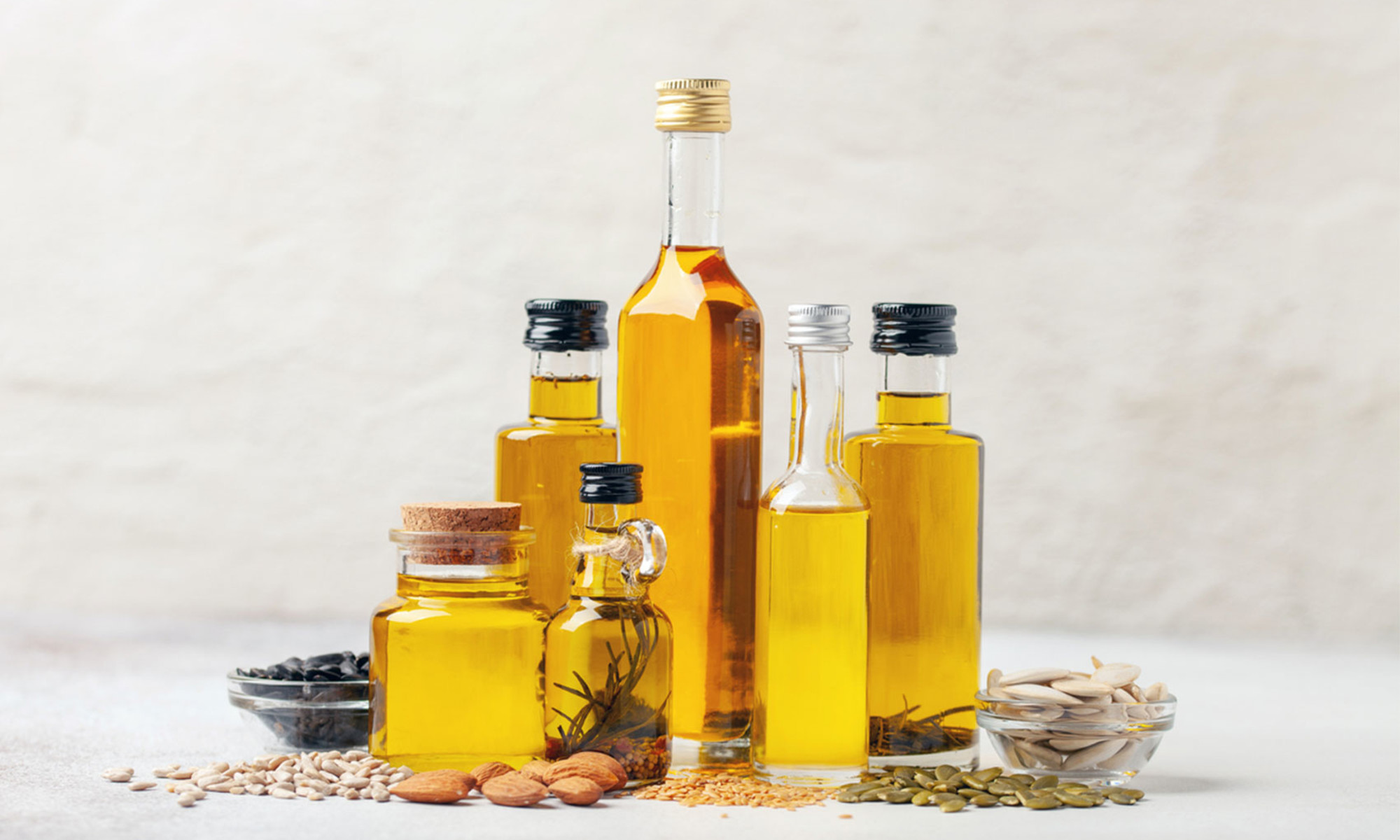
Choosing the right oils and products for seasoning and maintaining your Blackstone griddle is crucial for achieving optimal results and prolonging the lifespan of your cooking surface. Different oils offer varying smoke points, flavors, and properties that can affect the seasoning process and the performance of your griddle. Additionally, using specialized griddle seasoning products can provide added convenience and effectiveness in maintaining the seasoning layer and protecting the metal surface of your griddle.
Recommended Oils:
- Vegetable Oil: Vegetable oil is a popular choice for seasoning griddles due to its high smoke point and neutral flavor. It polymerizes effectively during the seasoning process, forming a durable and long-lasting seasoning layer that provides excellent non-stick properties.
- Flaxseed Oil: Flaxseed oil is another excellent option for seasoning griddles, thanks to its high concentration of unsaturated fats and low smoke point. It forms a hard, durable seasoning layer that is resistant to high temperatures and provides superior non-stick properties.
- Canola Oil: Canola oil is known for its neutral flavor and high smoke point, making it suitable for seasoning griddles. It polymerizes effectively during the seasoning process, creating a smooth and resilient seasoning layer that enhances cooking performance.
Specialized Griddle Seasoning Products:
- Blackstone Griddle Seasoning: Blackstone offers its own line of griddle seasoning products specially formulated to maintain the seasoning layer and protect the griddle surface. These products often contain a blend of oils and natural ingredients designed to provide superior performance and protection.
- Griddle Cleaning and Maintenance Kits: Some manufacturers offer comprehensive cleaning and maintenance kits that include specialized cleaning solutions, brushes, and protective coatings for griddles. These kits provide everything you need to clean, maintain, and protect your griddle for optimal performance and longevity.
Precautions:
Follow Manufacturer Recommendations: When choosing oils and products for seasoning and maintaining your griddle, always follow the manufacturer’s recommendations to ensure compatibility and effectiveness.
Avoid Harsh Chemicals: Be cautious when using harsh chemicals or abrasive cleaners on your griddle, as these can damage the seasoning layer and affect the performance of your griddle. Stick to gentle cleaning solutions and methods recommended by the manufacturer.
Conclusion
Seasoning your Blackstone griddle is a simple yet crucial task that enhances your cooking experience and prolongs the life of your griddle. By choosing the right oil, mastering the seasoning process, and maintaining the seasoning layer, you’ll enjoy countless delicious meals on your well-seasoned griddle. Happy griddling!

